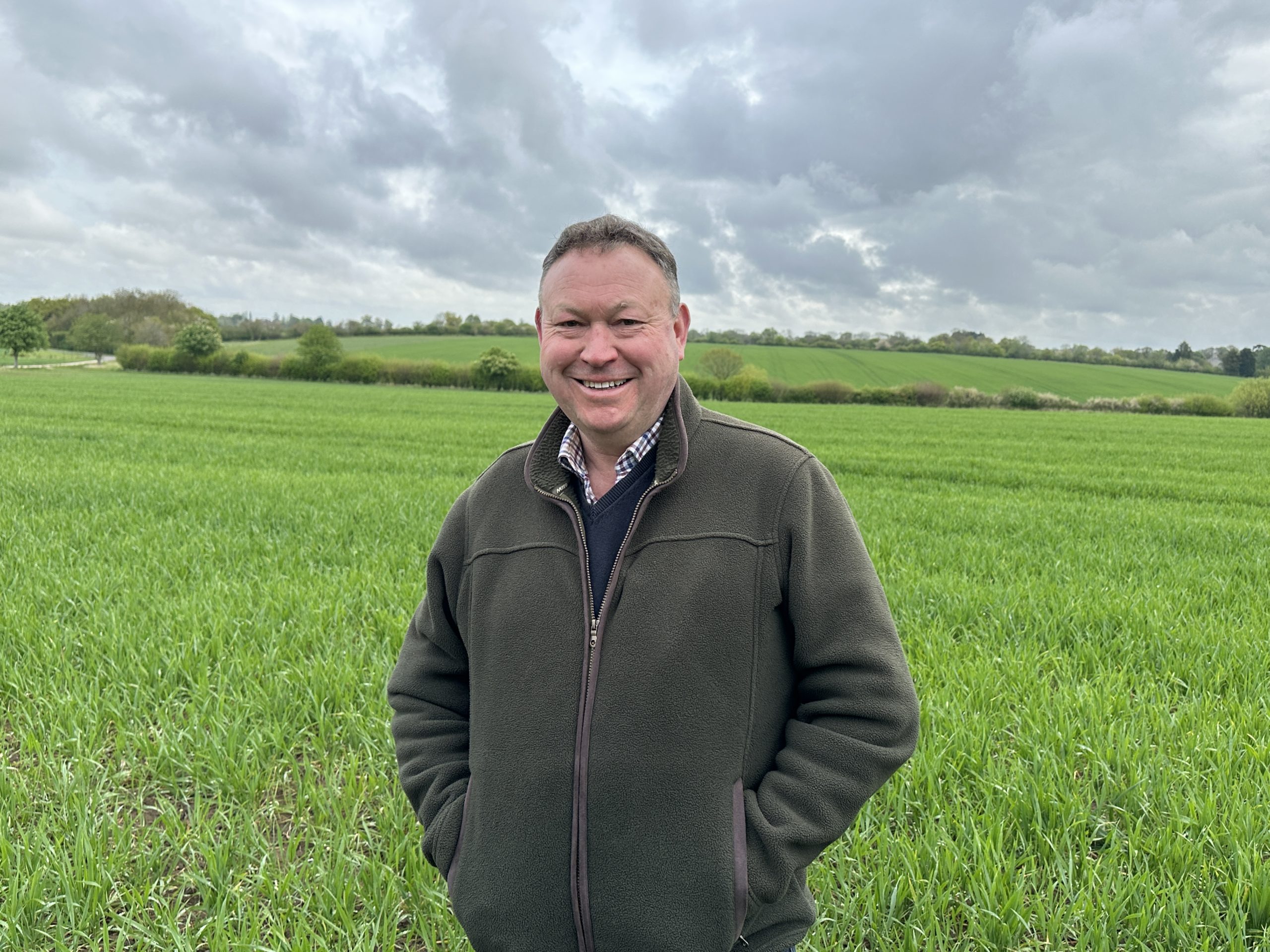Across the midlands and south east winter crops are looking well, T1 applications are going on and a reasonably kind spring has allowed on farm jobs to get done.
Toby Hogsbjerg, Norfolk
“So far the season is progressing well,” says Toby Hogsbjerg, Farm Manager at the Wicken Estate. “90% of the winter wheat has established well, three quarters of the nitrogen has been applied and T0s have gone on.
“We’ve done everything we can now, we just need some rain.”
Toby’s decision to apply a T0 was partly about managing workload. At the Wicken Estate, winter wheat and barley are break crops for the farm’s onions and potatoes.
“The wheat’s T1 often falls at the same time the root vegetables need planting,” he explains. “Our variety choices and the T0 applications serve as insurance in case we miss that perfect spray timing.”
At T1, Toby applied Revystar XE + tebuconazole across the majority of the wheat acreage and he is now weighing up options for T2. With rust being a growing concern, Revystar XE + Comet 200 is a strong candidate.
“Revystar covers all the main diseases and gives us flexibility,” he explains. “If needed, we can add to it. Tank-mixing with Comet at T2 can help with rust control and with greening, for example.”
Being on sandy soils prone to drought, keeping crops green and rooting is important for Toby.
“We’re not in a hotspot for any particular disease so it’s about covering the bases,” he says.
To date, other than a little mildew, Toby hasn’t seen much disease in the cereal crops, and he hopes that they continue to have yield potential.
Nick Bumford, Gloucestershire
Nick Bumford is approaching his 37th harvest and has developed the knack for getting the most from the Cotswold brash at Guiting Manor Farm. Winter wheat has averaged 10t/ha yield for the last three years, despite the difficult seasons.
“We’ve four main crops in the rotation,” he explains. “Oilseed rape is the main break crop and precedes the winter wheat. That’s followed by winter malting barley, or a cover crop of turnips grazed by sheep before spring barley.”
Nick is looking forward to seeing how some of the winter wheat acreages perform this year as it follows a new break crop trial of industrial hemp.
“Hemp is good for soil aggregation and carbon sequestration,” he notes. “Oilseed rape gives us a 30% or more uplift to our wheat yields – it’s partly how we’ve regularly achieved 10t/ha here. It will be interesting to analyse the data and see what the hemp offers across the rotation.”
Yield is also the focus of Nick’s varietal choice which, this year, includes Extase, Crusoe and Bamford.
“We’re at high altitude and usually don’t need a T0. Last year the same varieties performed as expected and were clean. We thought that the same would be true this year, but unfortunately, we found a small amount of yellow rust emerging in the Extase,” he says.
The fungicide programme is developed in accordance with his Niab crop consultant and although Nick is prepared to invest, he says it is always a balance between efficacy and cost.
“Penny pinching doesn’t end well,” he stresses.
Having invested in fungicide programmes, Nick ensures he makes the most of products by timing applications well.
“We’ve a good sprayer set up and put emphasis on hitting timings bang on. There’s enough unpredictability in the weather without us missing applications,” he says.
James Forrest, Suffolk
Managing over just 1,600ha in Suffolk, James grows a variety of crops. On the home farm, they are all suited to its heavy land and include winter wheat for seed and malting, maize for grain and forage and sugar beet, as well as lucerne and herbage seed for the farm’s herd of red poll cattle.
Autumn 2024 drilling went well overall and by December, more than the original planned acreage had been sown.
“I can’t remember a time when we were so up to date with all the sprayer and fertiliser applications,” he says.
While James had scaled back his fungicide programme in acknowledgement of the dry weather, he says it may need to be reviewed after the rain last week.
“T1 and T2 timings are really important, and we will do what is necessary at the time. However, at the moment, crops are fairly clean.”
James hopes recent conditions have encouraged winter crops to put roots down in search of water, rather than to grow sideways.
“It could mean that crops will hang on a little longer, if we get a hot and dry period at the end of June or beginning of July,” he explains.
When it comes to fungicide choice, James leans hard on his agronomist and selects the most appropriate treatment for the variety and the best active for the job.
“Revysol has featured in the farm’s fungicide programmes for many years simply because it does a good job.
“This year Revystar will certainly be in the mix for some of the wheat and RevyPro will feature on the barley,” says James.

